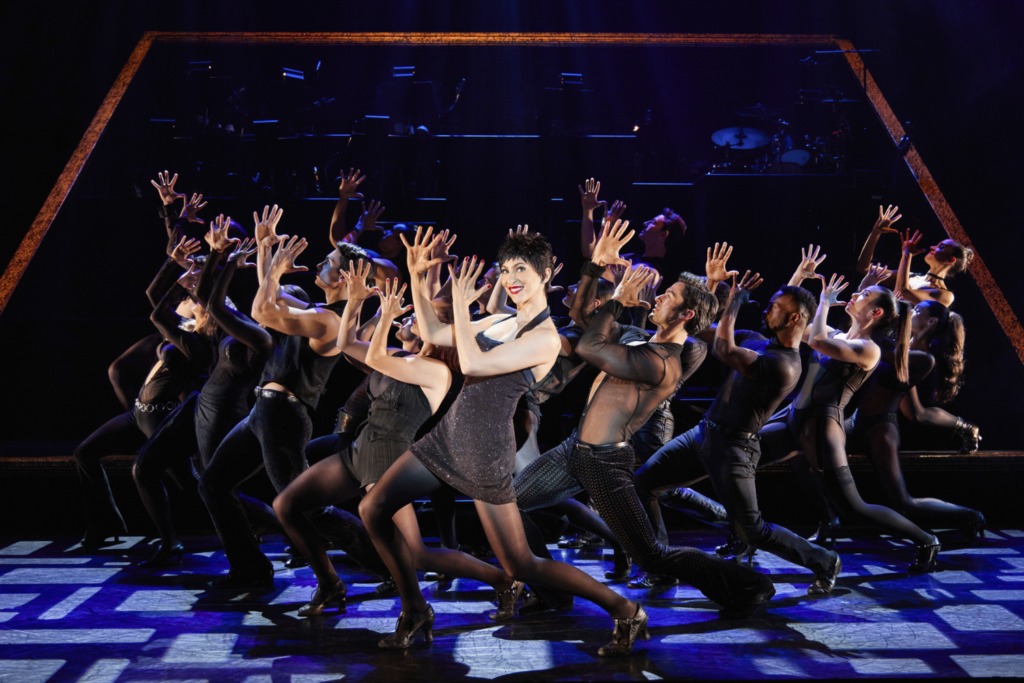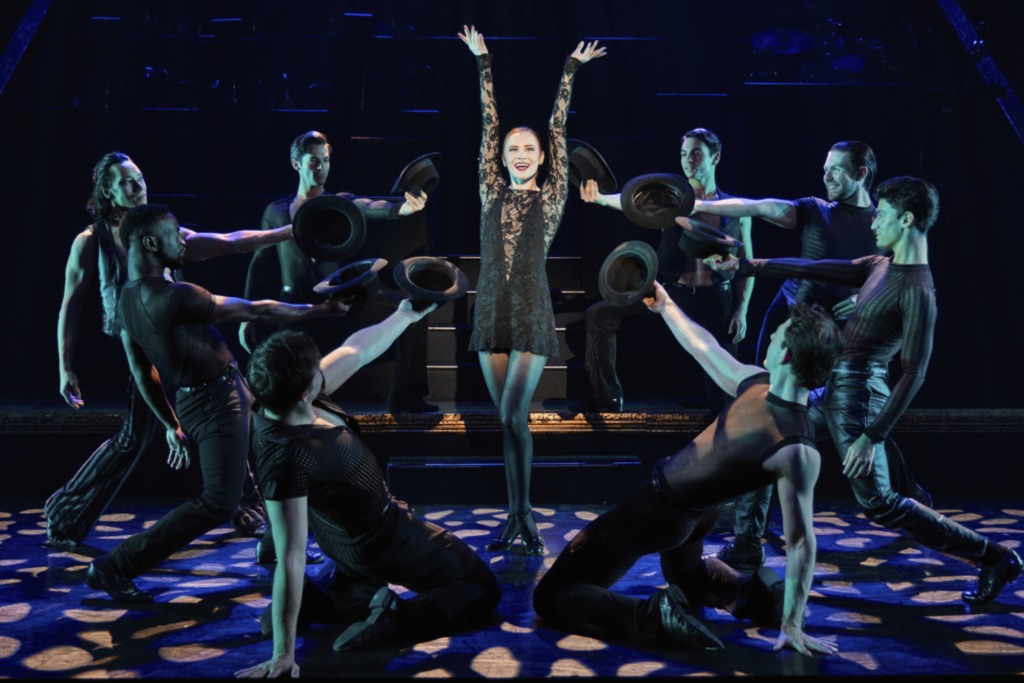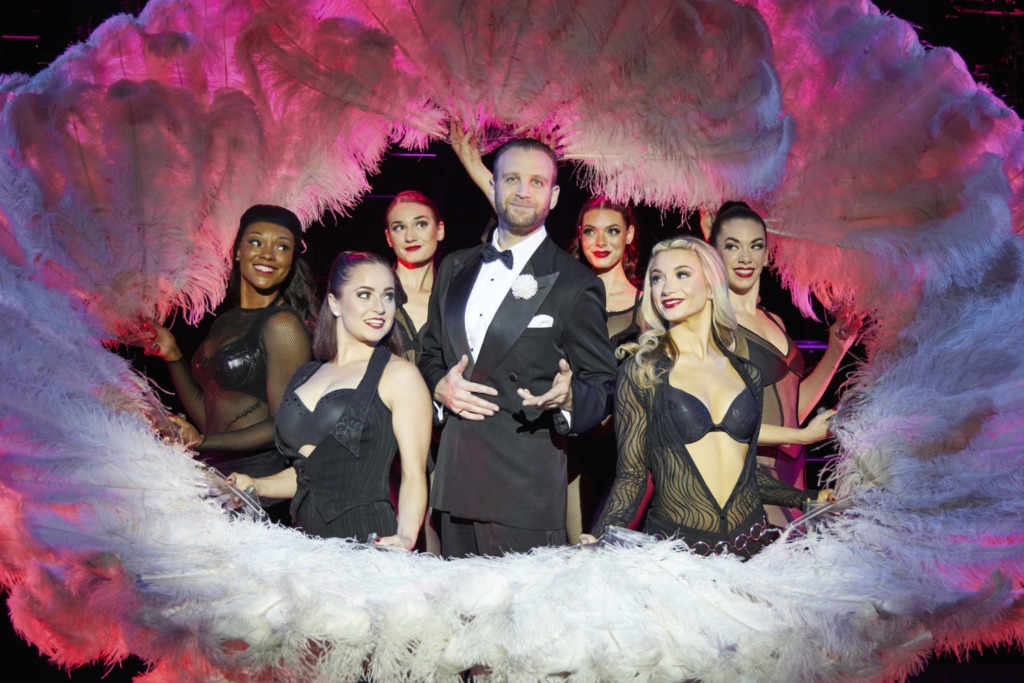In today’s crazy world, it’s no wonder that sometimes you just feel like you need to get away. No, not to someplace where everybody knows your name but, let’s face it, couldn’t we all use an excuse to rouge up our knees and roll our stockings down? Well, if that sounds appealing, I know a place where the gin is cold and the piano is hot. The Kander/Ebb/Fosse musical Chicago roars into DC this week at The National Theater in the heart of our nation’s capital. Based on a 1926 play by the same name, Chicago satirizes corruption in the criminal justice system and reflects a time in the early 1920’s when Chicago’s news media and public became obsessed with murders committed by women, usually with them killing their husband or lovers. The show opened on Broadway in 1975 and closed in 1977 only to be revived in 1996 with choreography by the late great Ann Reinking. This marks the 25th anniversary of the revival of Chicago which now claims the spot as the #2 longest running musical in Broadway history, surpassing even Andrew Lloyd Webber’s Cats (falling second to Webber’s The Phantom of the Opera.) And as every anniversary deserves a party, this production will surely get you in the party mood.

Director Walter Bobbie has put together a cohesive production, inserting a few modern touches while still staying true to the original. It works. Chicago is truly an ensemble show, with a variety of actors playing a number of roles, and Bobbie makes the most of their talent. Music Director/Conductor Cameron Blake Kinnear has taken this classic score and turned it into a tour-de-force for the ears. The harmonies are amazing and it’s nothing short of mesmerizing to watch these professionals belt their hearts out (all while dancing no less). Speaking of dancing, get ready for some old fashioned “Fosse” and get out your jazz hands! The late Bob Fosse also co-wrote the book of Chicago along with Fred Ebb and choreographed the original 1975 show. For those in-the-know, Fosse’s style is iconic, and Choreographer Gary Chryst has taken great care to stay true to the original production by recreating the original choreography while also taking inspiration from Reinking (who also gets credit in the program) but also throwing in a bit of his own style. The result is those clean, crisp, fluid moves that all of us Fosse fans have come to know and love, and then some.
Costume Designer William Ivey Long has costumed the show with aplomb, choosing to emphasize dark colors representing the dark undertone of the show. After all, even with all of the toe tapping musical numbers, this is a show about women in prison for murder. Lighting Designer Ken Billington understands this well and has chosen to keep the stage relatively dark for most of the show, with well-placed spotlights shining down on the performers for their solo numbers and subtly lighting the stage for the group numbers so the audience can see but keeping the mood and lights on the darker side.
The set itself is simplicity, which sometimes is better than complicated set pieces constantly moving on/off stage. The main focal point of the stage is a huge multi-level piece housing the entire orchestra and serving as an entrance/exit for the principals as well as a place for some of the performers to sit. One of the sides of the large piece also serves as a sliding board for Go-to-Hell Kitty to slide down from the top to the bottom (while a carefully placed ensemble member hangs out to the side on the floor just in case she topples off. Quite impressive! The orchestra, and musical conductor, are part of the show…and the interplay between them and the actors works well and causes quite a few chuckles from the audience. The main action takes place downstage, in front of the orchestra, with only some chairs brought on now and then for the scene being played. There are also chairs on either side of the stage where the ensemble hangs out when not in a particular scene, so they are on stage most, if not all, of the time.

The 22-member cast is nothing short of astounding. I expected nothing less since this is, after all, a professional touring production, and I could simply leave it at that but such powerful performances cry out for recognition and recognize them I must. Rob Marshall’s 2002 film adaptation has many fans, including yours truly, and comparisons are ultimately unavoidable but not fair to this brilliant cast. First, let’s deal with the principles (main characters). Logan Floyd (Velma Kelly) and Katie Frieden (Roxie) are true showstoppers. They are triple threats in every sense of the word who are forces to be reckoned with. Femme fatales who will actually have you cheering for them and forgetting about the fact that, well, they’re killers. There is much interplay between the vaudeville star-turned-jailbird Kelly and the star-wannabe Hart, and they complement each other quite well. Their character’s charm and ambition belies an evil truth which only serves to further the satirical nature of the show. Floyd shines as the self-absorbed Velma Kelly who aspires to be exonerated and hit stardom, even if it means walking over others to get there. Frieden has some terrific facial expressions as she grows through the show from unhappy housewife to jilted lover to a prisoner yearning for freedom and fame. Truth be told, Roxie & Velma are much alike in certain respects, but their differences make for some good comedy and interesting retrospective on what truly drives their characters.
Of course, Velma & Roxie’s aspiring fame post trial doesn’t come free. They are, after all, in jail awaiting their respective murder trials. They need someone to help them. Someone to guide them. Someone to put in a good word for them. Enter Matron “Mama” Morton played with impressive gusto by Christina Wells. But “Mama”, for all her good intentions, doesn’t do anything pro bono. If you pepper her ragu enough and have the means to grease her palms with some cold hard cash, you might just get what you need. I really believe that her character has good intentions, but employs the “you scratch my back, I’ll scratch yours” mentality…to her benefit. Wells belts her way through the showstopper “When You’re Good to Mama” to a practically standing ovation from the audience. Her voice is a force of nature to be reckoned with. Viewer beware.
Did I say “pro bono”? Speaking of the ever recurring every-man-for-himself theme that runs throughout the show, lawyer extraordinaire Billy Flynn, played by the handsome debonair Jeff Brooks, is quick to tell us from the moment we see him that all he really cares about is love. Just seeing a pretty woman running free is enough for him. Ahem. Brooks portrayal of the much sought-after attorney who has never lost a case is confident, at times arrogant, and playfully deceptive. All he really cares about is where they money is coming from and how to win his case, even if that means resorting to deception and fabrication. Brooks is also a triple threat who can not only talk the talk but walk the walk. He kicks up his heels a few times, but most notably in the rousing number “We Both Reached For The Gun”. Watching him “pull the strings” of Roxie to present her to the media as respectable and the murder defensible is a real treat. And just like at the end of “Mama’s” number, the audience goes bonkers. It’s truly a remarkable song not only for it’s visual appeal but for it’s lyrics which are designed to confuse, amuse and endear the media to what in reality is a totally false narrative. Everyone is suckered in, including the famous reporter Mary Sunshine.
G.A. James is a formidable Mary, preferring to see the robins, not the crows, while wearing her rose colored glasses on her nose. James has a terrific vocal range and embodies the sweet, kind personality of a truly caring reporter who really wants to believe, and help, whomever is currently hot in the news at present. But don’t let that lovely caring manner deceive you. Things are not always what they appear.
As much as Roxie’s husband, Amos, claims to be invisible and not really noticed by anyone, you can’t help but notice him. Played with a naïve flare, Brian Kalinowski is the consummate man that nobody notices. He’s the only person in the cast (aside from Hunyak) who you really feel is blameless and you can’t help but feel sorry for the poor guy. After all, his wife cheats on and lies to him, Billy can’t even get his name right, but his gullibility and friendly nature endears him as he sings his signature “Mister Cellophane” letting us know that he is aware that people sometimes look right through him. That’s no way to go through life, but you can’t help but feel bad for a guy who continues to take it & carry on even though he isn’t treated very well. He’s someone you can count on and would give you the shirt off his back if needed. Unfortunately, it’s guys like that who get taken advantage of, and Roxie/Billy make good use of his gullibility to further their own agenda. So sad, and Kalinowski knows how to evoke that pathos well.

As mentioned earlier, this is an ensemble show where everyone counts and has an important part to play, especially the 16-member ensemble which includes 7 understudies, 3 Swings and 2 Dance Captains. To call this group of young performers spectacular would be an understatement. To call them wonderful would be patronizing. If I may gush for a moment, these fine men and women can sing and dance their hearts out with such polish and poise that it makes one forget how much work and long rehearsal hours goes into learning music and choreography. The eight women in the ensemble are suave, sexy and full of energy as they parade through the show’s many extravagant dance numbers such as the much revered “Cell Block Tango” and “We Both Reached for the Gun”. And oh, the boys. Roxie’s boys that is. These guys know how to work the moves and would make Fosse proud. Clad in mesh shirts or sleeveless vests showcasing their chiseled biceps and abs, resplendent with their signature black hats and gently swiveling hips that drew gasps from several female audience members (and some men too for that matter), the guys make the most of what they have and what they have learned, turning in mind blowing performances in such numbers as “When Velma Takes the Stand” and, my personal favorite, “Roxie”. While they all are worthy of much applause, a special shout out to French actor Ed Gotthelf (Ensemble/Fred Casely) who exudes magnetism and dances/acts his way through the trial scene with endless energy and hilarity. His arms are enough reason to see the show. Nuff said.
So what are you waiting for? Grab your mate, your best friend, heck…even your boss…and prepare to be razzle dazzled. But don’t delay since the show is only in town till November 27, 2022.
Running Time: 2 hours and 20 minutes with one intermission
Chicago plays through November 27, 2022 at The National Theatre— 1321 Pennsylvania Avenue NW in Washington, DC. For tickets call the box office at 202-628-6161 or purchase them online.
